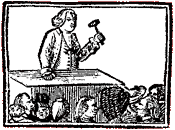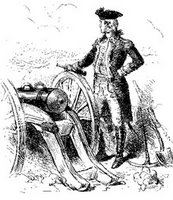War Department Papers that Got Out Before the Fire
This month I stumbled across the “Papers of the War Department, 1784-1800” website, a project of the Center for History and New Media. Here’s its raison d’être:
Fire destroyed the office of the War Department and all its files in 1800, and for decades historians believed that the collection, and the window it provided into the workings of the early federal government, was lost forever.This is akin to Boston’s recent political tempest-in-a-flash-drive over one of the mayor’s top aides deleting all his emails every night. Thousands of emails to and from him have now been found on other people’s computers and other servers. (So far, nothing untoward seems to have surfaced, but the state attorney general’s office is investigating him for erasing email after he’d been notified to save it.)
Thanks to a decade-long effort to retrieve copies of the files scattered in archives across the country, the collection has been reconstituted and is offered here as a fully-searchable digital database.
For the War Department files, we still don’t have papers that never left the building. But this effort has assembled papers the department sent to other government offices, to state governments, and to individuals. Fifty-five thousand documents in all.
The site offers capsule summaries and images of the documents, or, as its organizers say, “a free, online format with extensive and searchable metadata linked to digitized images of each document.” For example, here is Secretary of War Henry Knox’s report to Gouverneur Morris on the suppression of Shays’ Rebellion.
The descriptions and subject headings provide their own fun. The very first document that comes up in the listing of people by alphabetical order is accounting clerk John Abbot’s “formal statement regarding tthe [sic] confrontation between Capt. Vance and William Simmons, in which Vance accused Simmons of being a rascal.” This is one of thirteen documents in the collection tagged with the keyword “villainous insinuation.”






